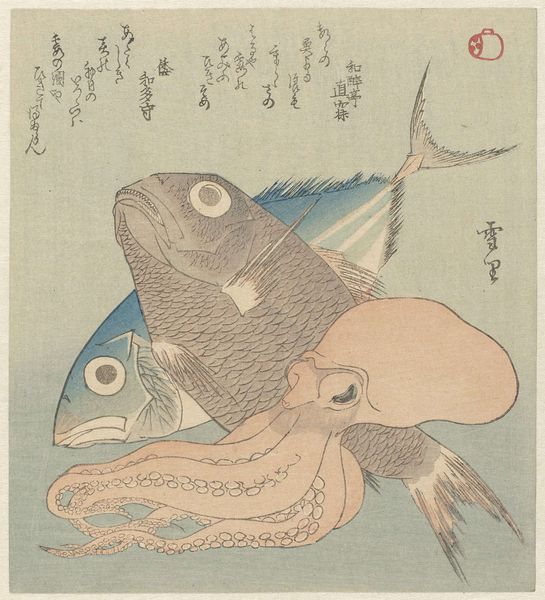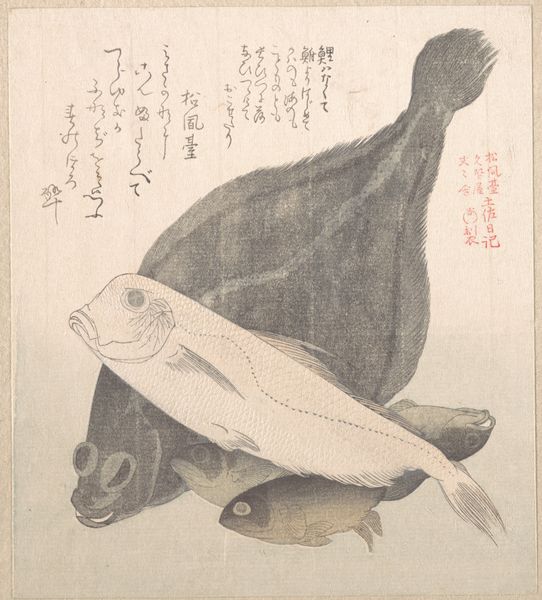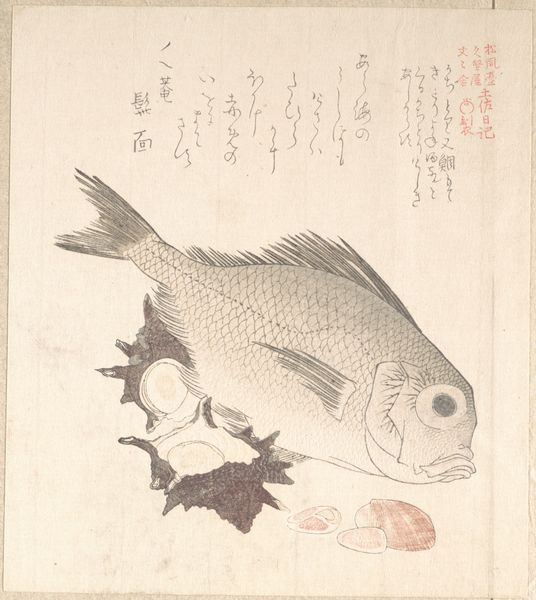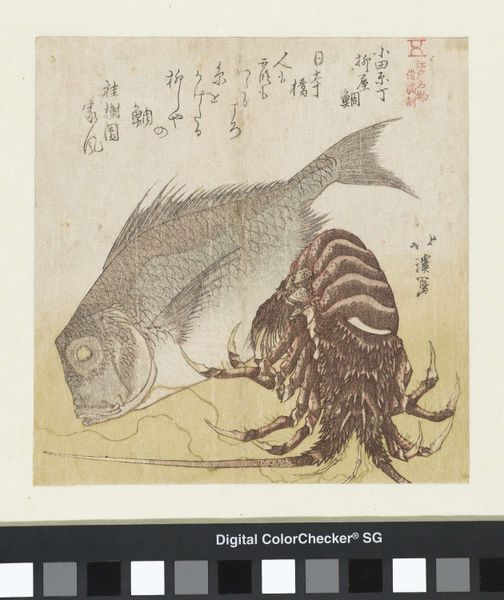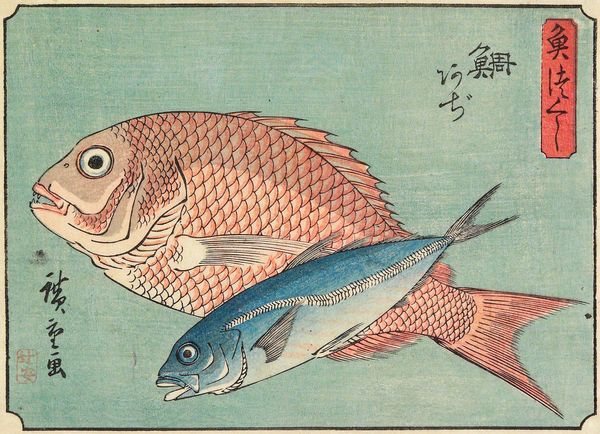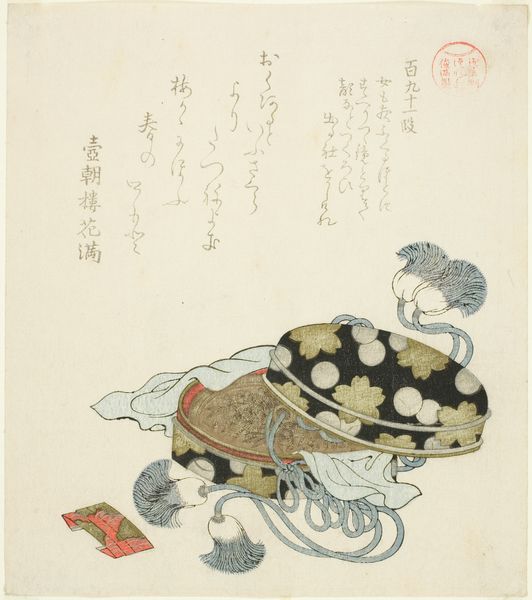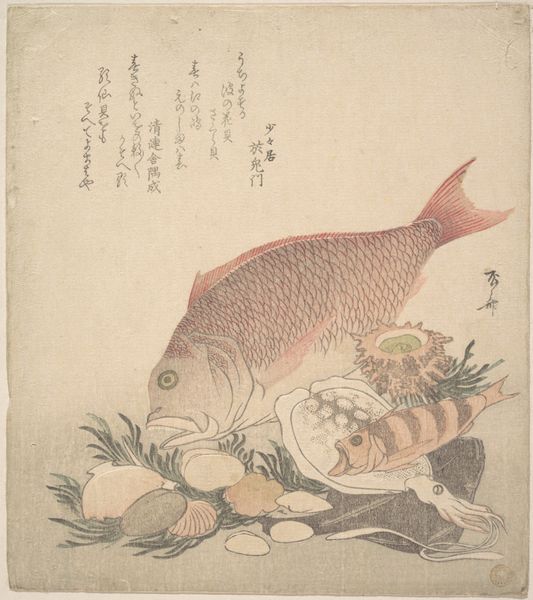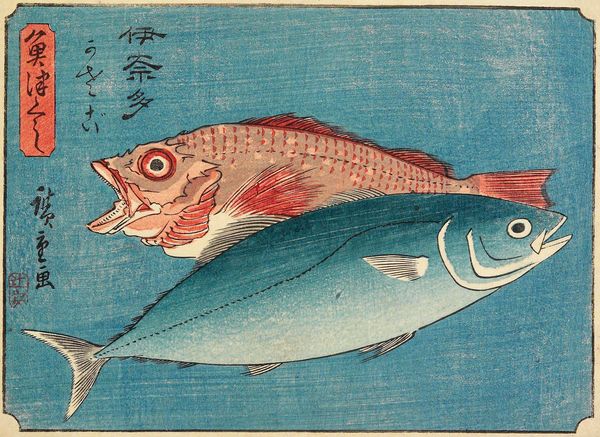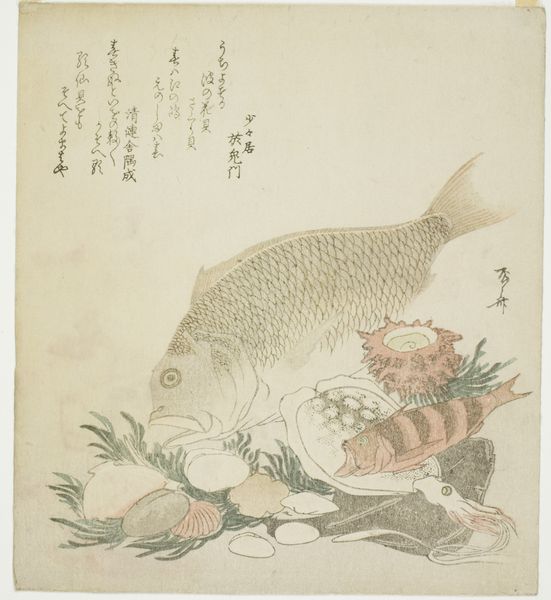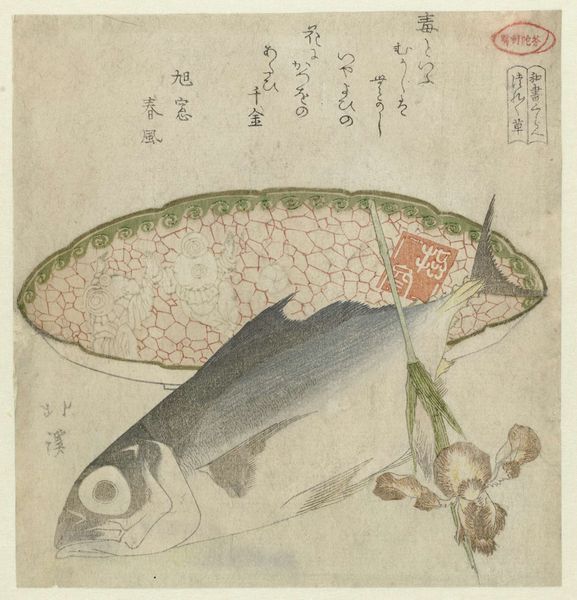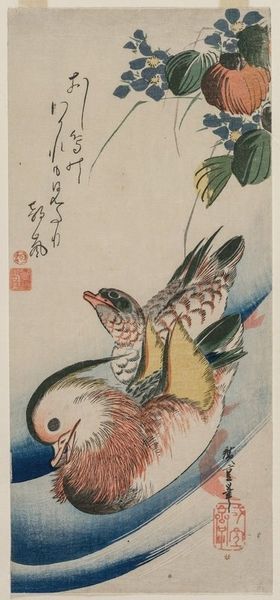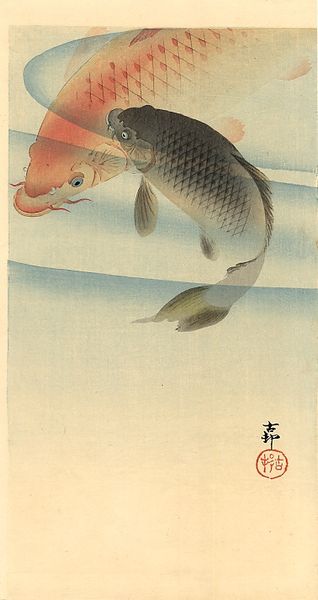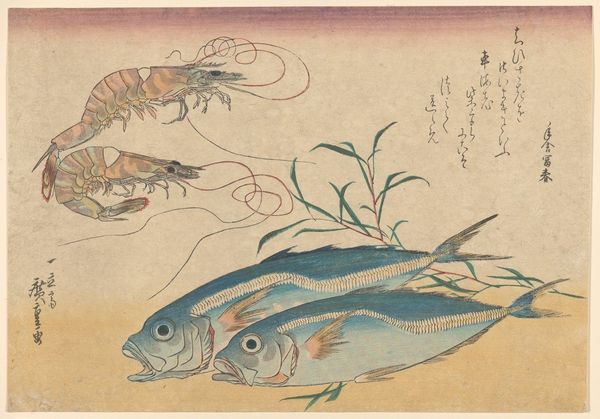
print, woodblock-print
# print
#
asian-art
#
ukiyo-e
#
coloured pencil
#
woodblock-print
Dimensions: height 207 mm, width 178 mm
Copyright: Rijks Museum: Open Domain
Curator: Here we have a fascinating woodblock print from Japan, made sometime between 1815 and 1820. It’s called “Head of a Salmon” and is attributed to Totoya Hokkei. The piece is currently housed in the Rijksmuseum. Editor: My first thought is how confrontational the image is. It’s stark, isolated. The wide-open mouth filled with those tiny, menacing teeth is a little unsettling. Curator: Indeed. It departs from more traditional landscape and portrait Ukiyo-e prints of that period. Hokkei often collaborated with the more well-known Hokusai, and one can consider that Hokkei often utilized common cultural symbols and presented them from a new lens. Consider, for example, how this fish could represent surplus while also a sense of disconnect and even fear. Editor: I appreciate how you highlight its departure from typical Ukiyo-e traditions. In a culture often fixated on beauty and grace, presenting something so… visceral feels like a statement. This imagery evokes a cultural shift with a complex interplay of mortality, sustenance, and the place of animals in the societal ecosystem. I wonder what that could mean in its context of exhibition. Curator: I'd agree. The prints would have been circulating widely within contemporary Edo society. Consider the work in relation to the rampant commercialization of artistic endeavors during the era. The rise of the merchant class demanded that new and evermore intriguing artwork be produced, and even popularized subjects like an unflinching image of a salmon could have had tremendous appeal, with particular nuances based on its place of exhibition or distribution. Editor: You are right, and that is why I think understanding that cultural dynamic and tension gives this piece, which could simply be about a fish head, significant social meaning and critical weight beyond its obvious visual shock. Curator: It underscores how even seemingly simple imagery can offer a window into societal complexities, consumerist urges, and maybe a subtle challenge to aesthetic norms, too. Editor: Absolutely, viewing art as a reflection and shaper of cultural forces allows us to find its hidden arguments and broader stories.
Comments
No comments
Be the first to comment and join the conversation on the ultimate creative platform.
